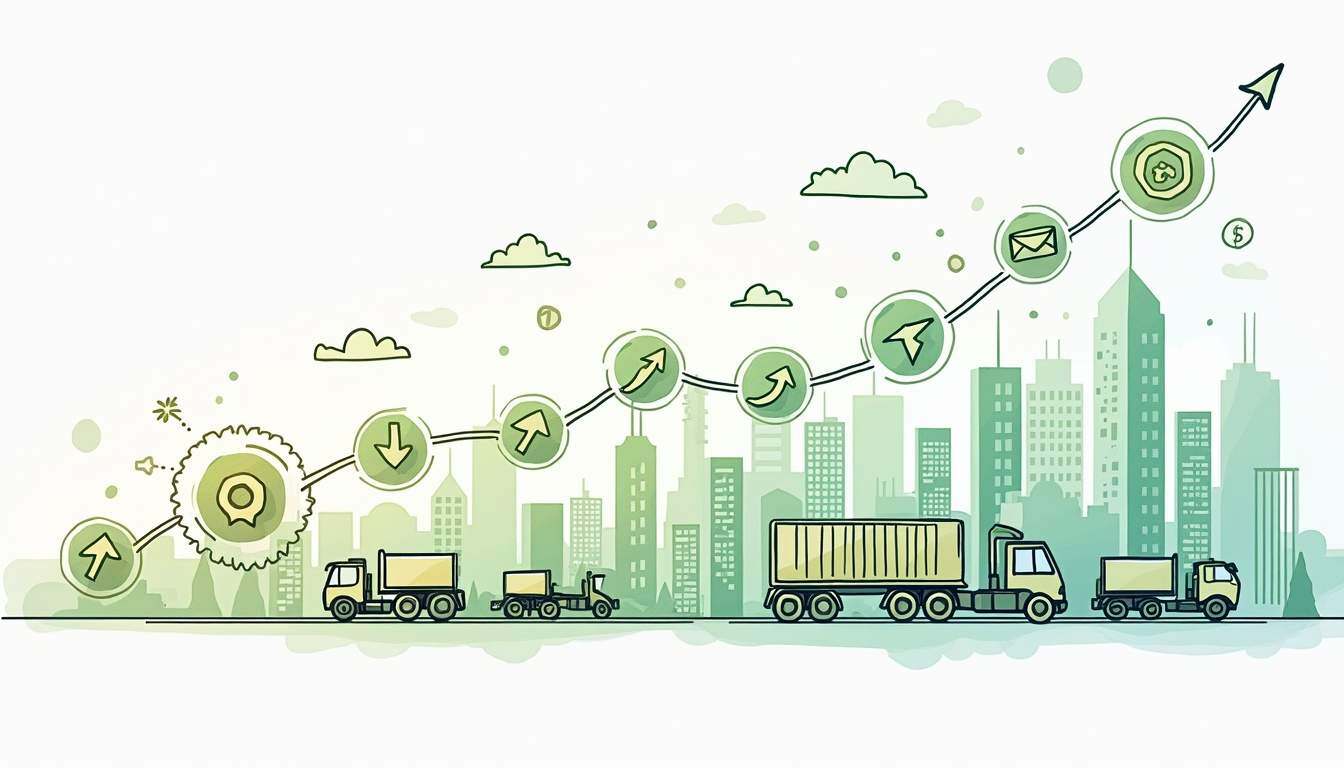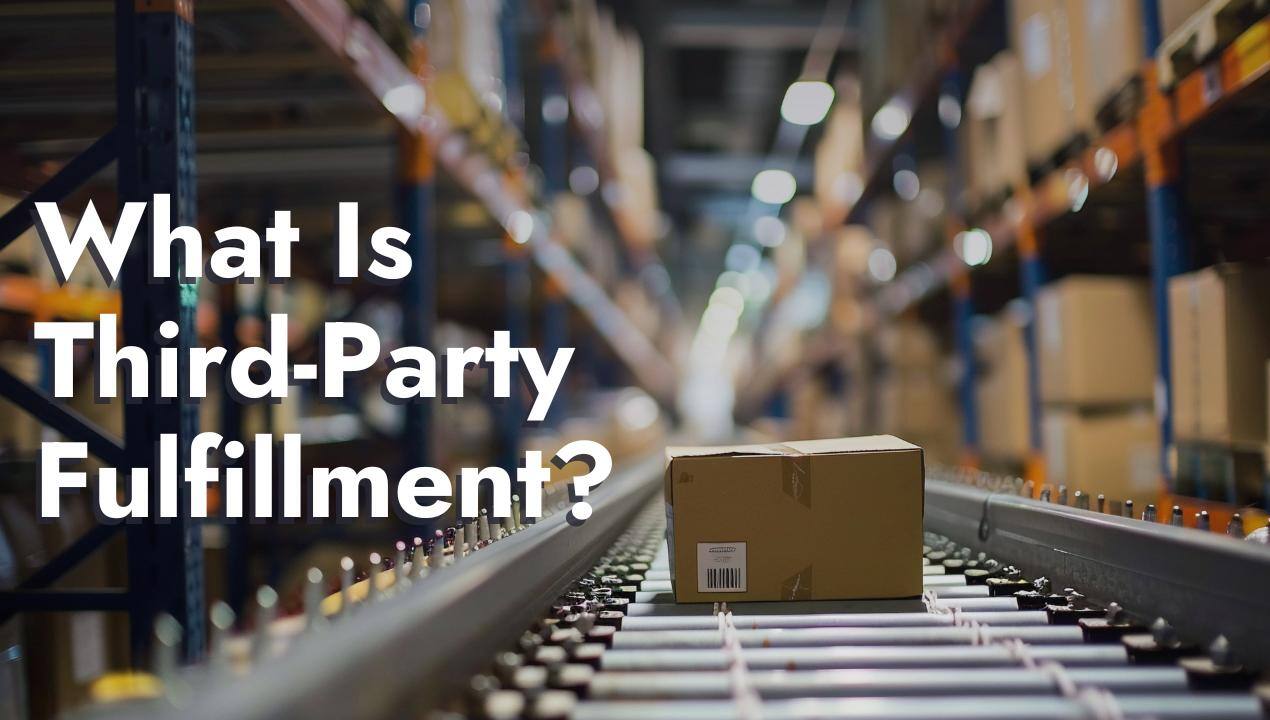Share this
What Does Scalable Ecommerce Fulfillment Mean? What Can It Mean?
by Shipfusion Team on Apr. 22, 2025

Order fulfillment is more than just moving packages from point A to point B – it’s a cornerstone of customer satisfaction, operational efficiency, and profitability. As ecommerce businesses scale, the complexity of fulfilling orders multiplies. A fulfillment strategy that works for 50 daily orders can crumble when you're shipping 5,000. Scalable order fulfillment is about designing systems, processes, and partnerships that don’t just keep pace with growth – they power it.
This article breaks down the strategies, technologies, and decision frameworks needed to ensure that your fulfillment operation can grow without hitting bottlenecks.
What Scalable Ecommerce Fulfillment Actually Means
Scalability in fulfillment refers to the ability to expand capacity, complexity, and geographic reach without breaking systems or draining resources. It’s not simply about storing more inventory or hiring more staff. It’s about handling growth predictably, efficiently, and with consistent quality.
Scalable fulfillment should support:
-
Higher order volumes without proportionally increasing costs.
-
More SKUs or product categories without added confusion.
-
Geographic expansion without longer delivery times.
-
Seasonal surges without breakdowns in service.
For most businesses, this means combining automation, software integration, warehousing strategy, and fulfillment partners into a cohesive system.
Foundational Pillars of a Scalable Fulfillment Strategy
A scalable fulfillment system is built on several interlocking components. Weakness in any one area can lead to service failures as your business grows.
1. Systems Integration and Real-Time Data
When order volume increases, human intervention becomes a bottleneck. Systems must speak to each other in real time – your ecommerce platform, your warehouse, your shipping providers, and your customer service tools.
Key integrations include:
-
Order Management System (OMS): A centralized system that aggregates orders from all sales channels and automates routing rules.
-
Warehouse Management System (WMS): A platform that handles inventory location, order picking, packing, and replenishment logic.
-
Shipping Software: Tools that automatically select the optimal carrier and service level based on cost, speed, or zone.
Lack of integration results in manual errors, shipment delays, and poor inventory visibility – problems that only compound at scale.
2. Distributed Warehousing Strategy
Geographic proximity to customers reduces shipping times and costs. A scalable fulfillment approach often includes a multi-node warehousing strategy – leveraging multiple warehouse locations strategically placed near high-density customer zones.
Advantages include:
-
Lower last-mile delivery costs.
-
Faster ground shipping options (often 1-2 days).
-
Improved carbon footprint by reducing transit distances.
The right number and location of warehouses depend on order volume, SKU velocity, and customer distribution. Many businesses work with 3PL providers who offer national or cross-border warehouse networks, eliminating the need to build infrastructure.
3. Inventory Allocation and Forecasting
Poor inventory planning breaks even the best fulfillment setup. Overstock leads to warehousing inefficiencies and cash flow strain, while stockouts lead to lost sales and brand damage.
Scalable inventory practices include:
-
ABC analysis: Prioritizing high-volume SKUs for frequent restocking and premium storage locations.
-
Real-time tracking: Using tools that sync inventory across all channels and warehouse nodes.
-
Predictive analytics: Forecasting demand based on seasonality, promotions, and historical trends to adjust stock levels proactively.
Inventory decisions should also be made with fulfillment logistics in mind. Products with high regional demand should be stocked closer to those markets to reduce transit time and cost.
Fulfillment Models That Scale Differently
No two ecommerce businesses are alike, and your choice of fulfillment model heavily impacts how you scale.
In-House Fulfillment
Some businesses manage fulfillment internally to maintain control. This can work well for startups or brands with highly customized packaging or niche logistics needs.
Scalability challenges:
-
Limited by warehouse space and labor.
-
Requires significant investment in infrastructure as volumes grow.
-
Risk of inconsistent service during growth surges.
Third-Party Logistics (3PL) Providers
3PLs offer outsourced fulfillment, leveraging established warehouse networks, workforce, and systems.
Scalability benefits:
-
Elastic capacity – scale up or down without major investment.
-
Access to advanced fulfillment tech without managing it in-house.
-
Geographic reach without needing to build warehouses.
Not all 3PLs are created equal. Some focus on low-cost, high-volume commodity fulfillment. Others – like Shipfusion – provide white-glove services with a focus on order accuracy, tech integration, and responsive account management.
Hybrid Fulfillment
Some businesses use a combination: in-house for high-value or custom orders, 3PLs for standard inventory, and dropshipping for long-tail products. This hybrid approach can offer flexibility but requires careful orchestration to avoid data fragmentation.
Operational Best Practices for Long-Term Fulfillment Scalability
Long-term fulfillment scalability is obviously different than short term. You’ll want to make investments in specific areas to make results last. That, and follow these best practices:
1. Standardize and Automate Where Possible
Every repeatable task is a candidate for automation. From barcode scanning to pick-path optimization to shipment tracking emails, automation reduces human error and accelerates throughput.
Examples:
-
Pick-to-light systems for fast order picking.
-
Automated shipping rate shopping tools.
-
Auto-reorder rules based on real-time stock levels.
2. Build Around KPIs That Matter
Scalability isn't just about volume. It’s about consistency at scale. Monitoring the right metrics ensures your system grows without sacrificing service.
Key KPIs to track:
-
Order accuracy rate: Incorrect shipments create extra costs and damage customer trust.
-
Average fulfillment time: Tracks how long it takes to process and ship an order.
-
Inventory turnover ratio: Indicates how efficiently inventory is sold and replenished.
-
Order-to-ship time: Measures speed and reliability of processing.
Dashboards should allow your team (and your 3PL, if applicable) to monitor these in real time.
3. Establish Playbooks for Seasonal Spikes
Scalability includes managing temporary surges without compromising baseline performance. Whether it’s Black Friday, holiday peaks, or product launches, seasonal events require unique planning.
A fulfillment playbook should include:
-
Forecasted volume by SKU and region.
-
Temporary labor onboarding strategy.
-
Packaging supply increases and contingency sourcing.
-
Pre-set carrier SLAs and backup shipping options.
When to Upgrade Your Fulfillment Capabilities
Some signs that your current fulfillment model isn’t scaling:
-
Increased customer complaints related to shipping times or order errors.
-
Disproportionate warehouse labor costs as order volume grows.
-
Frequent inventory mismatches between channels.
-
Lack of real-time insight into order status or inventory location.
At these tipping points, brands must choose whether to invest in their in-house operation or partner with a fulfillment provider built for growth.
Common Fulfillment Pitfalls That Break at Scale – and How to Avoid Them
Not every fulfillment operation is designed to grow smoothly. Many ecommerce brands hit breaking points because they underestimate how scaling affects their existing systems. Recognizing these vulnerabilities early allows you to adjust course before they impact customer satisfaction or profitability.
1. Manual Processes That Don’t Keep Up
Problem: When order volumes are low, it’s easy to overlook how many processes rely on manual intervention – spreadsheets for inventory, manual order batching, or hand-labeling packages. These tasks may take minutes per order today but become cost-prohibitive as you grow.
Impact: Slower turnaround times, higher labor costs, and increased risk of errors.
Solution: Audit your fulfillment workflow to identify manual dependencies. Transition to WMS-driven operations where barcodes, scanners, and rule-based automation handle repetitive tasks. Use your OMS to dynamically group orders, prioritize same-day shipments, and auto-sync stock across platforms.
2. Inventory Mismatch Between Systems
Problem: Inventory shows as “in stock” on your website, but it’s unavailable in the warehouse – or worse, oversold during a promotion. As you add sales channels and SKUs, fragmented inventory visibility becomes a recurring issue.
Impact: Canceled orders, chargebacks, customer complaints, and erosion of trust.
Solution: Implement a centralized inventory management system that updates stock counts in real time across all selling platforms and fulfillment centers. Choose tools that offer safety stock thresholds, automated replenishment alerts, and visibility into aging inventory.
3. Lack of SKU Rationalization
Problem: Brands often expand their catalog without streamlining what stays. Over time, this creates SKU bloat – slow-moving items take up space, and pickers have to navigate more aisles to fulfill orders.
Impact: Lower warehouse efficiency, increased storage costs, and wasted labor on low-margin SKUs.
Solution: Conduct periodic SKU performance reviews. Remove or archive products that no longer move or that cannibalize higher-margin alternatives. Align product strategy with warehouse layout – group fast-movers in high-velocity zones and reevaluate items requiring custom handling.
4. Overreliance on a Single Warehouse
Problem: Centralizing inventory in a single warehouse may simplify operations early on, but it creates fragility. Weather disruptions, carrier delays, and regional shipping constraints become magnified.
Impact: Long delivery times for certain customers, higher shipping costs, and exposure to regional risk.
Solution: Adopt a distributed inventory model using multiple fulfillment nodes. Use historical order data to map customer density and shift stock closer to high-demand regions. This reduces zone-based shipping costs and improves 2-day ground coverage.
5. Misalignment with Fulfillment Partners
Problem: Some ecommerce brands outgrow their 3PL’s capabilities or discover too late that their partner lacks the flexibility or tech stack to support their growth plans.
Impact: Service degradation, lack of visibility, difficulty implementing automation, and scaling delays.
Solution: Evaluate fulfillment partners not just on current performance, but on future-fit criteria. Ask if they offer API-first technology, custom integrations, real-time reporting, and dedicated support. Assess their ability to handle increased SKUs, complex kitting, returns management, and wholesale orders.
6. Ignoring Returns Logistics
Problem: Returns are often treated as a back-office function rather than a critical part of the fulfillment loop. But as order volumes increase, so do order returns – and they can quickly overwhelm unprepared systems.
Impact: Lost inventory, slow refunds, negative reviews, and increased customer support costs.
Solution: Design a reverse logistics process that mirrors your forward fulfillment operation in speed and visibility. Implement return portals for customers, offer automated return labels, and route returned items to the closest inspection facility. If you use a 3PL, confirm they support lot tracking and real-time return updates.
7. No Clear Reporting or KPIs
Problem: Scaling businesses often lack a centralized dashboard to track fulfillment performance. Without clear supply chain KPIs, issues remain hidden until they damage customer relationships or margins.
Impact: Unnoticed order delays, low accuracy rates, inefficient picking, and reactive decision-making.
Solution: Define and monitor a focused set of fulfillment KPIs – order accuracy, processing speed, average cost per order, inventory turnover, and warehouse utilization. Whether in-house or via a 3PL, ensure that your tech stack surfaces these insights with minimal lag.
8. Inefficient Packaging Operations
Problem: As volumes rise, packing becomes a bottleneck if not optimized. Too many box sizes, manual insertions, or unclear instructions can slow teams down or lead to damaged goods in transit.
Impact: Increased damage claims, poor unboxing experiences, and longer fulfillment times.
Solution: Standardize packaging materials, leverage automation (like box size optimization or automated tape machines), and document packing SOPs. If your brand uses customized packaging, work with a fulfillment provider experienced in executing brand-forward unboxing at scale.
Scalable Ecommerce Fulfillment: The Path to Profitable Growth
If you're serious about growing your ecommerce brand, fulfillment can’t be an afterthought. It must be engineered to scale alongside your sales, product catalog, and customer base. From integrated systems to flexible warehouse footprints to predictive inventory planning, scalable order fulfillment is what separates businesses that plateau from those that thrive.
Shipfusion specializes in scalable ecommerce fulfillment for brands that want to grow without trading off reliability or customer experience. With over 1 million square feet of warehouse space, proprietary software, and real-time reporting, we enable ecommerce brands to handle growth confidently. Whether you’re expanding to new markets or gearing up for peak season, our team is equipped to keep your fulfillment fast, accurate, and future-ready.
Get pricing today to see how Shipfusion can become the fulfillment partner that grows with you – because scaling shouldn’t mean sacrificing service.
Share this
You May Also Like
These Related Articles

What Does Scalable Order Fulfillment Mean? What Can It Mean for You?

Freight Surcharge: What It Means for Your Shipping Costs

What Is Third Party Fulfillment?
- April 2025 (20)
- March 2025 (26)
- February 2025 (26)
- January 2025 (37)
- December 2024 (16)
- November 2024 (23)
- October 2024 (22)
- September 2024 (27)
- August 2024 (9)
- July 2024 (8)
- June 2024 (5)
- May 2024 (8)
- April 2024 (8)
- March 2024 (6)
- February 2024 (6)
- January 2024 (5)
- December 2023 (3)
- November 2023 (3)
- October 2023 (5)
- September 2023 (4)
- August 2023 (2)
- July 2023 (1)
- June 2023 (4)
- March 2023 (2)
- October 2022 (1)
- September 2022 (5)
- August 2022 (4)
- July 2022 (7)
- June 2022 (4)
- May 2022 (4)
- April 2022 (6)
- March 2022 (2)
- February 2022 (1)
- January 2022 (3)
- December 2021 (2)
- November 2021 (4)
- October 2021 (2)
- September 2021 (5)
- August 2021 (4)
- July 2021 (4)
- June 2021 (3)
- May 2021 (2)
- April 2021 (3)
- March 2021 (3)
- February 2021 (3)
- January 2021 (2)
- December 2020 (4)
- November 2020 (2)
- October 2020 (4)
- September 2020 (2)
- July 2020 (5)
- June 2020 (4)
- May 2020 (2)
- April 2020 (2)
- March 2020 (4)
- February 2020 (1)
- December 2019 (1)
- May 2018 (1)
- March 2018 (2)
- February 2018 (3)
- January 2018 (3)
- November 2017 (3)
- July 2017 (4)
- March 2017 (3)
- February 2017 (5)
- January 2017 (3)
- December 2016 (4)
- November 2016 (6)
- October 2016 (6)
- October 2015 (1)
- September 2015 (1)
- June 2015 (3)
- May 2015 (3)
- August 2014 (1)
- July 2014 (1)
- March 2014 (1)
- February 2014 (1)